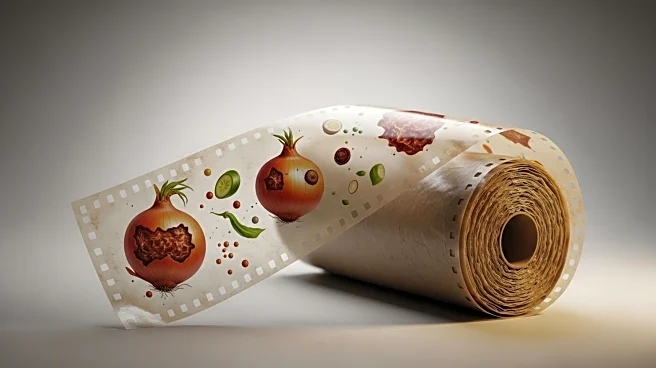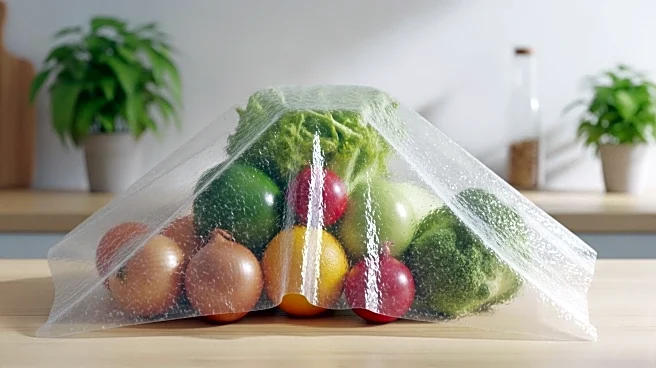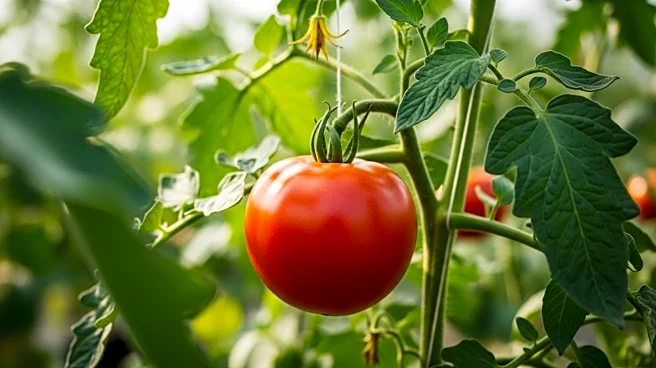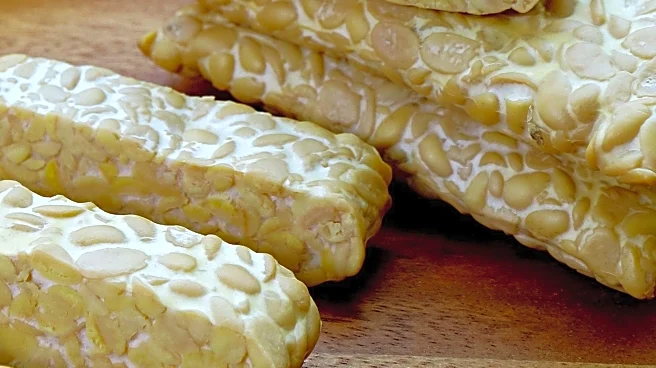What is the story about?
What's Happening?
Researchers have developed a novel biodegradable food packaging film that acts as a sensor to detect spoilage and contamination in real time. This innovative film is made from onion waste-based quantum dots, specifically sulfur and nitrogen-doped carbon quantum dots (S, N-CQDs), combined with amylopectin, a natural biopolymer. The film is designed to visually indicate the presence of spoilage microorganisms and chemical contaminants, such as hexavalent chromium (Cr(VI)). The development of this sensor addresses global food safety issues by providing a more efficient alternative to traditional, slow lab-based analysis methods. The film's fluorescence-based sensors offer real-time insights into food quality, making them a promising tool for smart packaging systems.
Why It's Important?
The introduction of this biodegradable film has significant implications for the food industry, particularly in enhancing food safety and reducing waste. By utilizing onion waste, the film not only provides a sustainable solution but also supports broader environmental goals. The ability to detect spoilage and contamination in real time can help reduce food waste and improve consumer safety. This innovation could lead to a shift in how food packaging is approached, with potential benefits for both manufacturers and consumers. The film's affordability and biodegradability make it an attractive option for widespread adoption, potentially transforming food safety standards and practices.
What's Next?
Future developments will focus on improving the film's flexibility, as its current xerogel form is slightly brittle, which may limit its practical application in real-world packaging. Researchers aim to enhance the film's usability without compromising its sensitivity. As the technology advances, it could see broader implementation in the food industry, leading to more sustainable and efficient packaging solutions. The ongoing research and development efforts will likely explore additional applications and improvements, further solidifying the film's role in advancing food safety and sustainability.
Beyond the Headlines
This development highlights the potential for using food waste in innovative ways, contributing to a circular economy. The film's dual function as both a microbial and chemical sensor underscores the growing trend towards multifunctional materials in packaging. The research also emphasizes the importance of interdisciplinary approaches, combining materials science, chemistry, and food safety to address complex challenges. As the technology matures, it could inspire similar innovations across other industries, promoting sustainability and efficiency.
AI Generated Content
Do you find this article useful?













